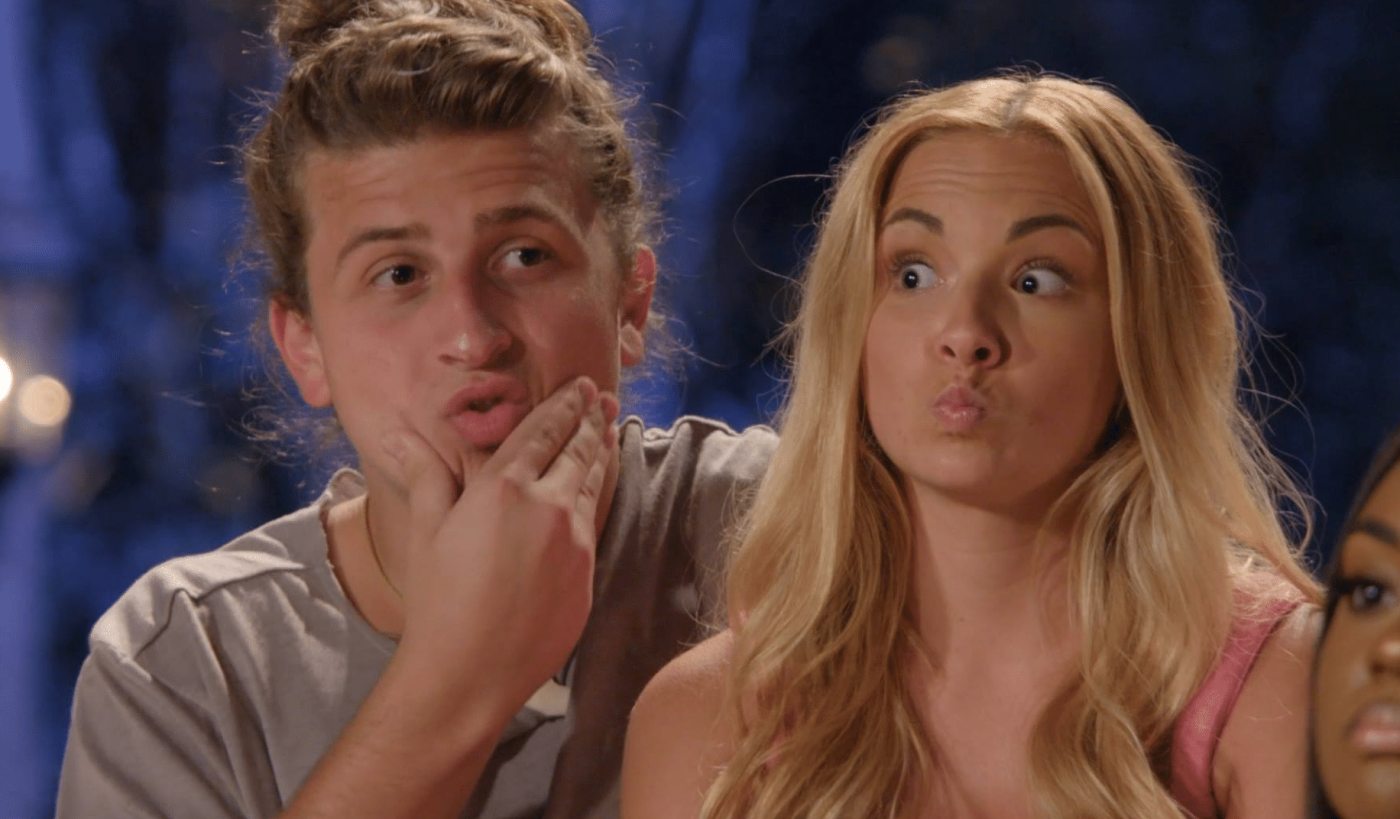MTV reality relationship shows aren’t really my jam. But after hearing about ‘Are You The One?’ and giving it a go, I was completely enthralled. If you can look past the portions with excessive drama and annoying editing, as is typical of these shows, what is left is a logical matching puzzle combined with an interesting insight into human mating behaviour.
The concept
The show has a fairly simple premise. Individuals apply to the show, answering questions and revealing the kinds of information about themselves that you would to a dating website in order to find a good personal match. ‘Algorithms’ (probably something similar to OK Cupid and other such sites) match a set of males to a set of females (11 of each in the most recent series). These 22 individuals get invited to stay in a large house for 12 weeks, with the aim of finding their ‘perfect match’, as determined by the aforementioned algorithm. If they succeed, they each win $1 million. They would also potentially find their ‘ideal partner’, though I’d imagine that what the show establishes as a ‘perfect match’ probably doesn’t work out in most cases.
The process broadly consists of two stages:
- The match-up – people sort themselves into couples according to who they believe their match to be. The show then tells them (in a frustratingly drawn out process) how many correct matches they have. It’s a bit like the board game ‘Mastermind’ (the one with different coloured pegs).
- The truth booth – winners of challenges get to go on dates (usually 2 or 3 couples). The remaining contestants nominate which couple they would like to send to the ‘truth booth’, where they can fully reveal whether that specific pairing is a correct match or not.
How many combinations are there?
It might seem like it’s fairly easy to just test out different matches and mathematically solve the matching problem by brute force. To see why this is not the case, let’s start from the simplest case. Assume that there are only two males (M1 and M2), and two females (F1 and F2). It’s easy to see that there are only 2 combinations:
| F1 | F2 | |
|---|---|---|
| M1 | x | |
| M2 | x |
| F1 | F2 | |
|---|---|---|
| M1 | x | |
| M2 | x |
In other words, M1 can either match with F1, or F2. M2 just takes whoever’s left. What happens if we increase the size of the sets so that there are three males and three females (M1, M2, M3; F1, F2, F3)? Well, suppose M1 picks F1. They are paired off, so what is remaining is a 4-person problem like we had before, for which there are 2 combinations. But M1 could pick F2 or F3. For each of these, there are 2 combinations, so the total number is 3 x 2 = 6. You can extend the same logic to easily work out the total number of combinations in an 8-person problem (4 x 3 x 2 = 24).
In general, as you may already have noticed, the number of combinations is just the factorial of the number of people in each group. In the case of the most recent season of the show, there are 11 males and 11 females. This means that the total number of combinations of pairings is 11! = 11 x 10 x 9 x 8 x 7 x 6 x 5 x 4 x 3 x 2 = 39,916,800. And this is why brute force is not the way to go to solve this problem, especially given that there are only 10 match-up phases in the game.
The human factor
Of course, the number of combinations may be huge, but you would hope that in practice, people would fairly quickly be able to assess and rule out people that they know they would not match up well with. In theory, if people were to initially spend equal amounts of time with each potential match in order to get to know them, it should be possible to eliminate a good chunk of the 121 total match cases, therefore slashing the total number of combinations quite considerably. And obviously, the quicker the strongest pairings can emerge and be identified as correct matches, the simpler the matching problem will become.
Both amusingly and frustratingly, however, human nature appears to get in the way. In the latest season (which is the one I watched), it appeared that people initially gravitated around one or two people based mostly on attraction rather than an extensive personality match. This meant that for a large proportion of the season, some people had barely spoken to the other 9 or so potential matches, and therefore had revealed virtually no information that would help them in case they were wrong about their initial instincts (spoiler: they mostly were).
Still, I highly recommend giving the show a watch, both for the strategic appeal, and the insight into human nature it provides. Yes, the stupidity of many of the decisions that are made often gets frustrating, but it is not without intrigue.


A simple way to bust this open, is to recognize that homophily exists for Openness, Conscientiousness, Extraversion, and Agreeableness (where Extraversion has weaker homophily effect). Neuroticism has a unique quasi-heterophily effect, where there is a a leader-follower pairing that can be neither too close nor too far. Ultimately erotic appeal trumps compatibility of personality, beliefs, or merit when one does not have to “settle down”. https://archive.fo/8Hp9N